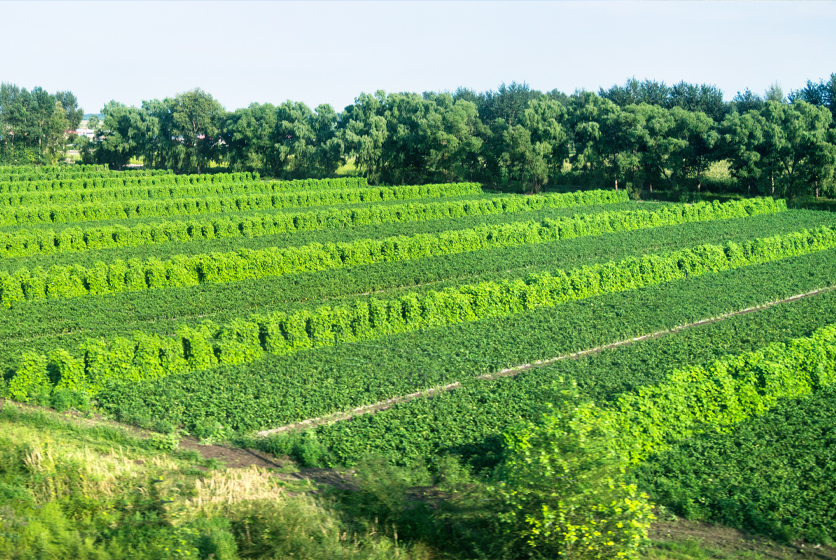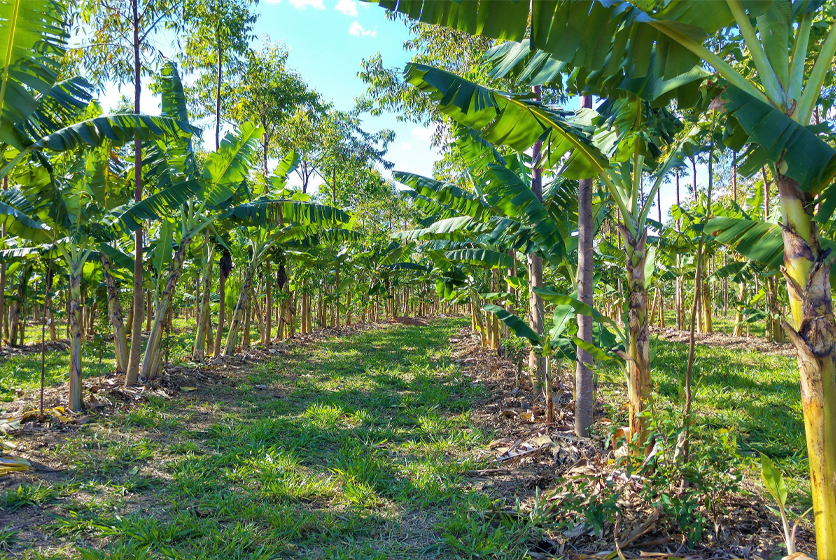Agroforestry
Agriculture has developed, transformed and expanded in multifarious ways. Some of these changes have helped sustain different kinds of practices for decades and some of these changes are new. One such fairly new change has been the advent and growth of agroforestry.
What is agroforestry?
When a farmer ‘diversifies’ their land use and includes trees and shrubs with their regular crops - they have turned to agroforestry. World Agroforestry (ICRAF) defines it as agriculture with trees.
This system can be deployed in different ways including:
- Growing crops that can be grown under tree canopies
- Using shrubs near ground level and letting the crops grow above them
- Alternate or alley cropping where crops and trees grow side by side
- Support for fauna - for instance, growing trees so cattle can graze on the grass underneath them

Benefits of agroforestry
Some main benefits are:
- Maintaining soil value in terms of biological activity and organic matter
- Better nutrients supply - nitrogen-fixing trees and nutrients provided by decomposing trees as well
- Increased diversity in farm land management
- Better control of soil erosion
- Enhanced support for livestock as well
Agroforestry in India
In 2014, a comprehensive policy - The National Agroforestry Policy of India - was launched by the Government. This policy includes:
- Using agroforestry to help small farmers
- Increasing the forest cover in India
- Meeting the requirements of timber industry
- Preserving the environment too
Aspects such as inter-departmental coordination, financial & educational support, database management, research and various regulatory mechanisms have been addressed in this policy. India was the first country to adopt such a policy.

Extent of agroforestry
It is estimated that 25.31 million hectares are under agroforestry in India today. Some regions of the country have done some remarkable things with this system.
For instance, Baligaon in Bihar saw a significant increase in income - 40% to be precise - when they implemented a food forest model. Eight different crops, trees and shrubs existed on a single piece of land.
Forest Research Institute, Dehradun is working with different agroforestry models too. Punjab, for instance, has a farmer growing melia trees and fruit trees on land that supports rice and wheat cultivation too.
North West India has used agroforestry to meet demands for wood. The use of plantation timber trees for plywood products has been the main feature here.
Tamil Nadu’s farmers in Pudukottai district turned to agroforestry to mitigate the issues of falling groundwater and use of chemical fertilisers. With a systematic approach, farmers have been able to grow and combine long-term yielding trees like mahogany & teak with annual yielding trees like mango and pomegranate and other crops such as rice, coconut, fruit and so on. They have been able to enjoy better soil quality for crops and increase in productivity and income too.
Given the immense potential of agroforestry, it is safe to state that it is a dynamic system that brings the farmers even closer to nature and help them get even more resourceful in managing land, water and crops.
#InterestingInfo
- Itteri is being used as a biofence in many places in Tamil Nadu to keep away peafowl from crops.
- Ashok Vatika, a garden in Ramayana is thought to be an example of agroforestry.



